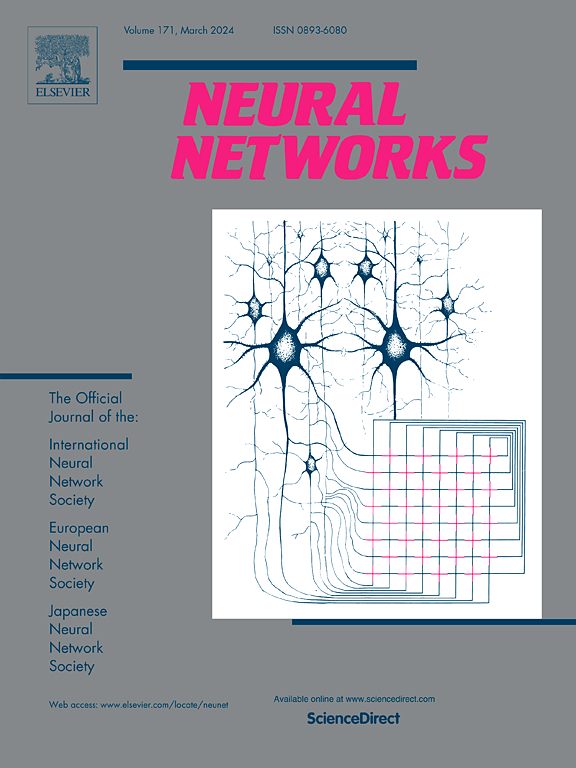GCPNet: An interpretable Generic Crystal Pattern graph neural Network for predicting material properties
IF 6
1区 计算机科学
Q1 COMPUTER SCIENCE, ARTIFICIAL INTELLIGENCE
引用次数: 0
Abstract
To predict material properties from crystal structures, we introduce a simple yet flexible Generic Crystal Pattern graph neural Network (GCPNet), which is based on crystal pattern graphs and employs the Graph Convolutional Attention Operator (GCAO) along with a two-level update mechanism to extract key structural features from crystalline materials effectively. The GCPNet model complements the missing microstructure inputs of existing networks and leverages diverse information updating mechanisms, enabling the prediction of material properties with better precision over other networks on five public datasets. Further experiments show that our model is straightforward to use and robust in real-world applications. We also highlight the good interpretability of GCPNet, using local contributions from our model to increase the search efficiency for the high-throughput perovskite screening by 32%. Taken together, our findings show that the GCPNet model offers an effective solution to facilitate the screening and discovery of ideal crystals and is an efficient alternative to existing neural networks in material property prediction.The implementation code can be found at https://github.com/feiji110/GCPNet.
求助全文
约1分钟内获得全文
求助全文
来源期刊

Neural Networks
工程技术-计算机:人工智能
CiteScore
13.90
自引率
7.70%
发文量
425
审稿时长
67 days
期刊介绍:
Neural Networks is a platform that aims to foster an international community of scholars and practitioners interested in neural networks, deep learning, and other approaches to artificial intelligence and machine learning. Our journal invites submissions covering various aspects of neural networks research, from computational neuroscience and cognitive modeling to mathematical analyses and engineering applications. By providing a forum for interdisciplinary discussions between biology and technology, we aim to encourage the development of biologically-inspired artificial intelligence.
 求助内容:
求助内容: 应助结果提醒方式:
应助结果提醒方式:


